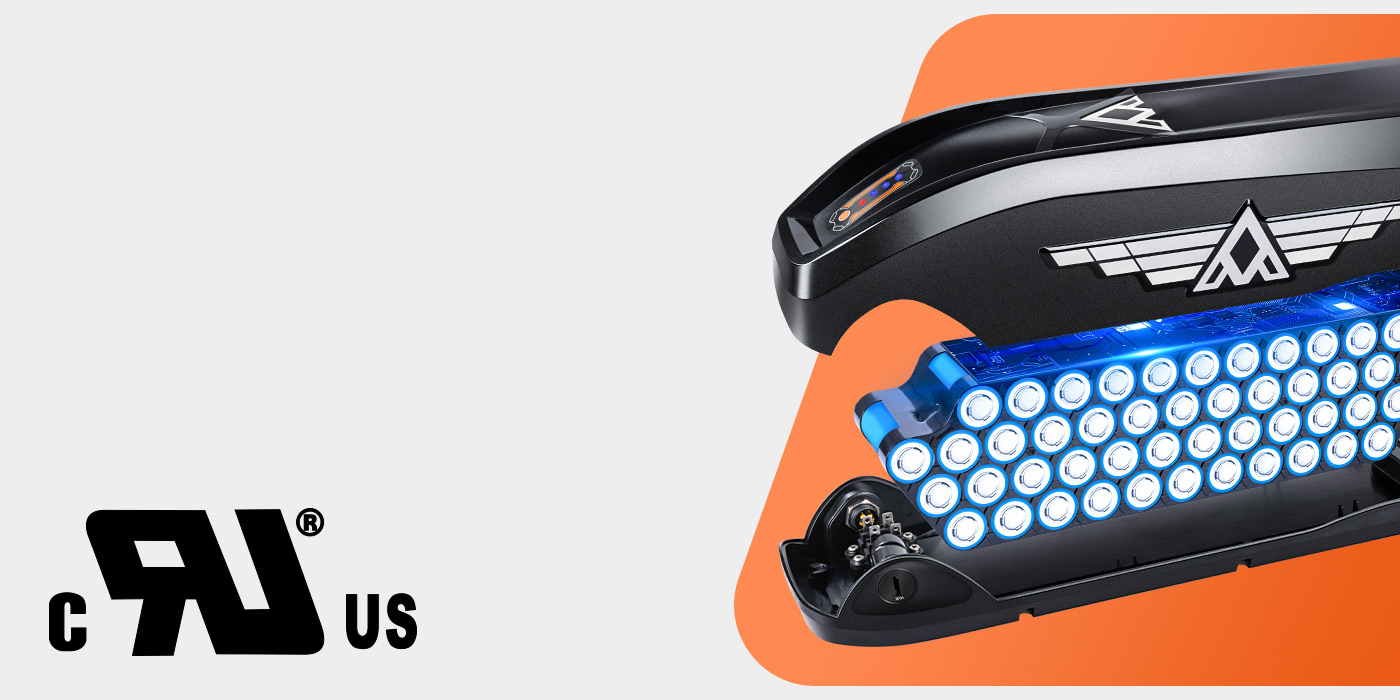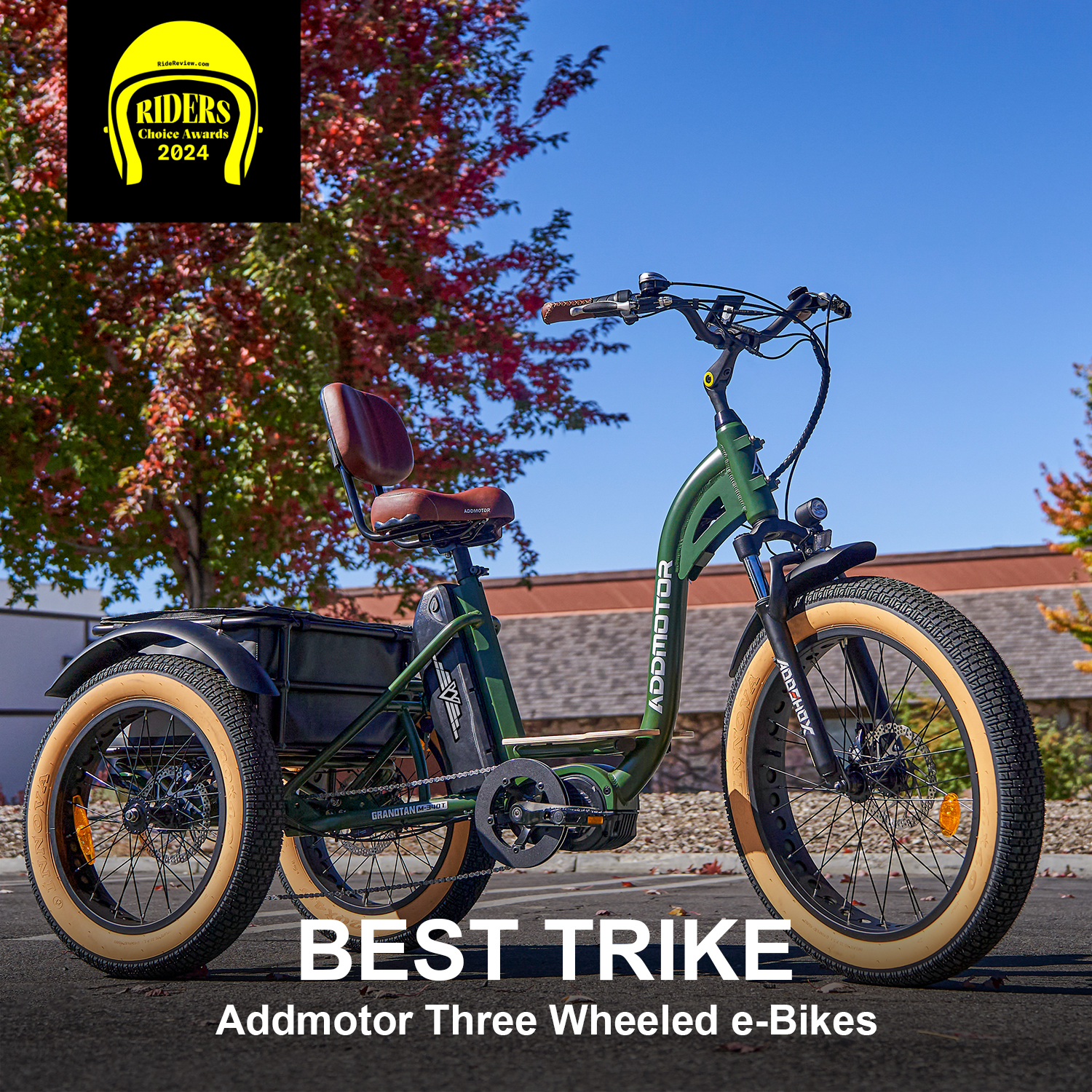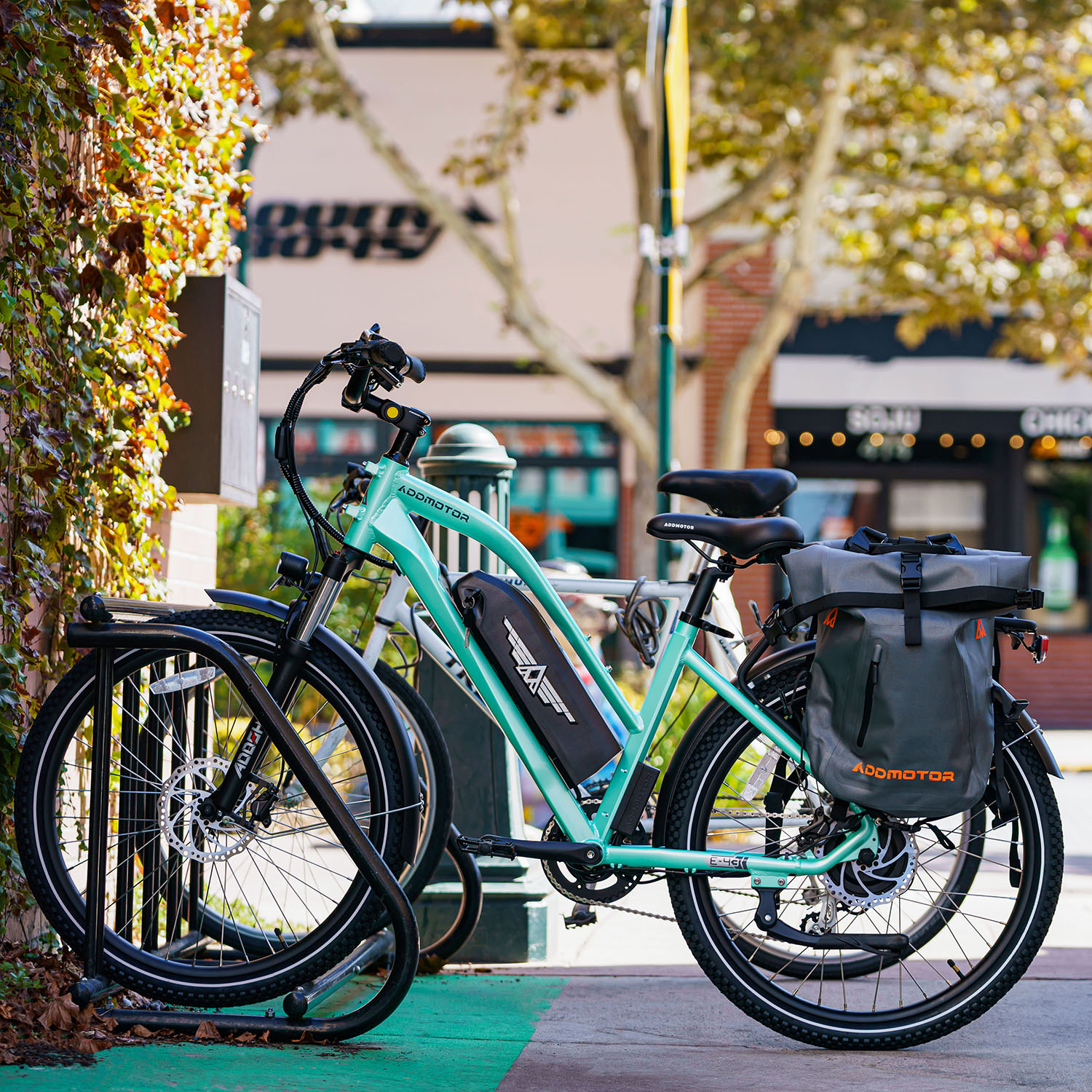Powering Through Winter: Essential Maintenance and Care Tips for Your E-Bike Battery
By Addmotor | 05 January 2024 | 1 Comments
Winter is just around the corner, and so are the challenges for your ebike battery.
Cold temperatures, wet conditions, and reduced daylight can all affect the performance and lifespan of your e-bike battery. Thus, winter can be a challenging season for ebike or etrike riders, especially when it comes to taking care of the battery.
The battery is one of the most expensive components of an ebike and the best electric trikes, and often high-quality replacements can require several hundred dollars. Therefore, knowing how to maintain it properly is very important to enjoy uninterrupted bike rides even in winter.
This article explains all the simple tips and tricks, so you can keep your battery in top shape and enjoy riding your e-bike all year round. So, let's get into it,

Studies show that a typical ebike’s battery capacity can drop by 50% when the temperature falls from 10°C to -20°C. This means that the battery cannot deliver the same amount of power and energy. Simply put, the battery will run out of power faster and have a shorter range than in normal conditions.
This can lead to reduced speed, acceleration, and hill-climbing ability. The battery may also display inaccurate readings of the remaining charge or shut down unexpectedly.
Avoid exposing the battery to extreme temperatures, and if the storage area fluctuates significantly from room temperature, consider bringing the battery indoors for storage.
If the temperature is below freezing, the battery should be warmed up before use, by either plugging it into the charger for a few minutes or riding the bike at a low speed for a short distance.
Avoid dropping below 20% or 10% charge to prevent power loss and unnecessary strain on the battery, which could expedite its deterioration. While extended rides might lead to lower battery levels, consider topping off the charge whenever possible to help prolong its lifespan.
Additionally, after a ride, refrain the battery from immediate charging. Let the battery rest to recover from usage, even if it doesn't feel hot. This brief respite allows the battery to stabilize before charging. Within a short span of around 5 minutes, your battery should be ready for its next charge.
_1697186858.jpg)
If you're ready to keep your e-bike battery in top condition during winter, follow these tips for a reliable and enjoyable riding experience. With a little care and attention, you can power through winter without compromising your best electric trikes’ performance, extend your battery's life, and enjoy smooth rides even in chilly weather.
Cold temperatures, wet conditions, and reduced daylight can all affect the performance and lifespan of your e-bike battery. Thus, winter can be a challenging season for ebike or etrike riders, especially when it comes to taking care of the battery.
The battery is one of the most expensive components of an ebike and the best electric trikes, and often high-quality replacements can require several hundred dollars. Therefore, knowing how to maintain it properly is very important to enjoy uninterrupted bike rides even in winter.
This article explains all the simple tips and tricks, so you can keep your battery in top shape and enjoy riding your e-bike all year round. So, let's get into it,

Understanding How Cold Affects Ebike Batteries
Most Ebike and Etrike batteries come in lithium-ion or lithium-polymer types, known for their durability and efficiency. However, these batteries are sensitive to temperature changes, especially in cold weather. Although they work efficiently at room temperature, cold weather can affect these ebike batteries in several ways:Reduced Capacity And Range:
Cold weather can lower the chemical reactions inside the battery cells, resulting in lower voltage and capacity.Studies show that a typical ebike’s battery capacity can drop by 50% when the temperature falls from 10°C to -20°C. This means that the battery cannot deliver the same amount of power and energy. Simply put, the battery will run out of power faster and have a shorter range than in normal conditions.
This can lead to reduced speed, acceleration, and hill-climbing ability. The battery may also display inaccurate readings of the remaining charge or shut down unexpectedly.
Charging Challenges:
Charging ebike or Etrike batteries in cold temperatures can be less efficient. It may take longer to charge fully, and the battery might not reach maximum capacity. The self-discharge rate may also be increased, as the battery loses some of its stored energy due to the low temperature. This means that the battery will drain faster, even when not in use. Moreover, charging a cold battery can damage the cells and reduce the lifespan of the battery.Reduced Lifespan And Durability:
Continual exposure to cold temperatures can degrade the battery cells and reduce their lifespan. The battery may also suffer from internal resistance, which can cause overheating and swelling. Furthermore, cold weather can increase the risk of condensation and corrosion inside the battery, which can affect the electrical connections and circuitry.Maintenance and Care Tips for Your E-Bike Battery This Winter
To prevent or mitigate the negative effects of cold weather on ebike batteries, there are some tips and precautions that ebike you can follow:1. Storage Practices
One of the most effective ways to protect the ebike battery from cold weather is to store your e-bike or adult electric trike properly. Find a dry, temperature-controlled environment, and if possible, avoid extremely low temperatures. Store your e-bike battery at room temperature (around 68°F/20°C or slightly lower) when not in use.Avoid exposing the battery to extreme temperatures, and if the storage area fluctuates significantly from room temperature, consider bringing the battery indoors for storage.
2. Avoid Extreme Cold:
Another way to protect the best electric trikes’ battery from cold weather is to avoid riding or storing the bike or adult electric trike in extreme cold conditions. As a general rule, the battery should not be exposed to temperatures below -4 °F /-20 °C, as this can cause irreversible damage to the battery.If the temperature is below freezing, the battery should be warmed up before use, by either plugging it into the charger for a few minutes or riding the bike at a low speed for a short distance.
3. Protect from Moisture
Make sure to keep the battery dry and away from snow, moisture, or water exposure to maintain its integrity. In cold weather, water can freeze rapidly, leading to potential damage to the battery. In that case, while riding, you can use a protective cover to shield the battery from snow and excessive cold.4. Optimal Charge Levels
Charge your e-bike or adult electric trike battery before it reaches 30% life. Keeping the battery at or above this level is optimal for its health. Monitor the battery's charge level displayed on your e-bike's monitor during rides.Avoid dropping below 20% or 10% charge to prevent power loss and unnecessary strain on the battery, which could expedite its deterioration. While extended rides might lead to lower battery levels, consider topping off the charge whenever possible to help prolong its lifespan.
5. Avoid Charging in Hot Conditions
Avoid charging or using the battery when it is hot. Various factors, such as high external temperatures, steep terrain, or using a charger with higher voltage, can cause the battery to overheat. To maintain the battery's longevity, let it cool down before charging.Additionally, after a ride, refrain the battery from immediate charging. Let the battery rest to recover from usage, even if it doesn't feel hot. This brief respite allows the battery to stabilize before charging. Within a short span of around 5 minutes, your battery should be ready for its next charge.
6. Unplug at Full Charge
Once your battery reaches between 80% to 100% charge, disconnect the charger. Overcharging doesn’t overload the battery but can strain it, affecting its overall health. Rest assured, the battery retains the charge until your next ride, ensuring optimal performance and longevity.7. Regular Inspection and Cleaning:
Perform routine checks of the battery for any signs of corrosion, damage, or moisture accumulation and replace if necessary. The battery should also be cleaned and dried after each use, to prevent dirt, dust, and moisture from accumulating. You can clean the battery and connectors using a soft, dry cloth or recommended cleaning solutions to prevent any potential issues.8. Usage Tips in Cold Weather
In cold weather, adjust your riding techniques to optimize battery usage. Start your rides gradually to warm up the battery, avoid sudden accelerations, and maintain a consistent speed to preserve energy._1697186858.jpg)
In conclusion
Proper care and maintenance of your ebike battery during winter are pivotal for its sustained performance.If you're ready to keep your e-bike battery in top condition during winter, follow these tips for a reliable and enjoyable riding experience. With a little care and attention, you can power through winter without compromising your best electric trikes’ performance, extend your battery's life, and enjoy smooth rides even in chilly weather.
Recently Reviews
Read MoreLeave a Reply
Your email address will not be published.Required fields are marked. *
Latest Stories

_1713256451.jpg)


